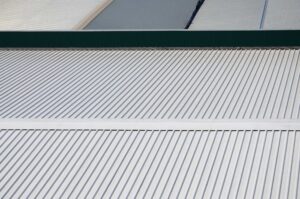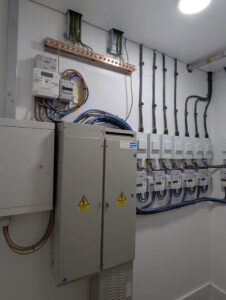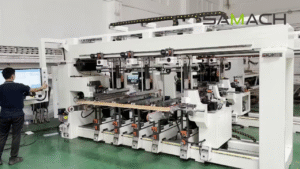
Injection molding machines are vital to the manufacturing of countless plastic products used in industries ranging from automotive and medical to packaging and consumer goods. While they are incredibly efficient and powerful, they also pose potential safety risks if not handled properly. To maintain a safe working environment, it’s critical to follow specific safety measures—regardless of whether you’re operating new or used Injection Molding Machines For Sale.
In this blog, we’ll explore the key safety practices every manufacturer should implement to protect workers, equipment, and productivity.
1. Proper Machine Guarding
One of the most essential safety measures is the use of physical guards to protect operators from moving parts. This includes:
- Interlocked safety gates: These prevent access to the mold area while the machine is in operation.
- Fixed or adjustable guards: These cover mechanical parts such as tie bars, ejector mechanisms, and rotating screws.
Without proper guarding, workers can be exposed to serious hazards like pinching, crushing, or injection injuries.
2. Emergency Stop Systems
Every injection molding machine must be equipped with clearly marked and accessible emergency stop (E-stop) buttons. These should be:
- Easily reachable from the operator’s station
- Regularly tested for functionality
- Strategically placed near areas where hands-on work occurs
An efficient E-stop system can prevent injury and protect the machine from damage during a malfunction or emergency.
3. Operator Training and Certification
Machines are only as safe as the people operating them. Employers should invest in:
- Comprehensive training programs that cover machine operation, startup and shutdown procedures, and safety protocols
- Refresher courses for existing staff to stay current with safety regulations
- Hands-on training for troubleshooting, mold changes, and maintenance
Even when investing in used injection molding machines for sale, training is crucial, as different models may operate differently or have unique safety features.
4. Lockout/Tagout (LOTO) Procedures
LOTO is essential when performing maintenance, mold changes, or repairs. This process ensures that machines are completely powered down and isolated from energy sources before work begins.
LOTO procedures should include:
- Shutting down all power (electrical, hydraulic, pneumatic)
- Locking power sources with designated locks
- Tagging the machine with operator information
- Verifying that the machine cannot be restarted until it’s safe
LOTO violations are one of the most cited OSHA offenses in manufacturing—don’t overlook it.
5. Temperature and Pressure Safety
Injection molding machines operate at high temperatures and pressures, making it vital to control and monitor these parameters closely.
Safety measures include:
- Automatic pressure relief valves
- Temperature sensors and alarms
- Protective clothing (gloves, heat-resistant sleeves) for operators
- Routine maintenance on barrel heaters, sensors, and valves
Ignoring temperature or pressure limits can result in plastic blowouts, burns, or equipment failure.
6. Routine Inspection and Maintenance
Whether you’re using a brand-new machine or browsing used injection molding machines for sale, preventive maintenance is key to both safety and efficiency. Schedule regular checks on:
- Hydraulic systems (for leaks and pressure irregularities)
- Electrical systems (for frayed wiring or loose connections)
- Mechanical components (for wear and alignment)
- Safety interlocks and sensors (for responsiveness and reliability)
A well-maintained machine not only runs safer but also lasts longer.
7. Safe Mold Handling Procedures
Mold installation and removal are among the riskiest tasks in injection molding. Improper lifting, clamping, or alignment can cause severe injuries.
Best practices include:
- Using hoists or cranes for mold lifting
- Verifying that clamps are properly torqued
- Ensuring mold halves are correctly aligned before closing
- Wearing steel-toed boots, gloves, and protective eyewear
Implementing standard operating procedures (SOPs) for mold changes reduces accidents and improves efficiency.
8. Clear Signage and Work Area Organization
A clutter-free, well-labeled workspace enhances safety in any industrial environment.
Ensure your facility includes:
- Warning signs near hot surfaces, pinch points, and moving parts
- Floor markings to separate walkways from operational areas
- Tool stations to avoid trip hazards or misplaced equipment
- Fire extinguishers and first aid kits within easy reach
Conclusion
Injection molding machines are powerful tools—but without the right safety protocols, they can also be dangerous. By implementing machine guarding, emergency stop systems, training programs, and routine maintenance, manufacturers can significantly reduce the risk of accidents and machine damage.
Whether you’re investing in a new unit or browsing Used Injection Molding Machines For Sale, safety should never be an afterthought. Taking the time to protect your people and equipment pays off in long-term productivity, fewer injuries, and greater peace of mind.





